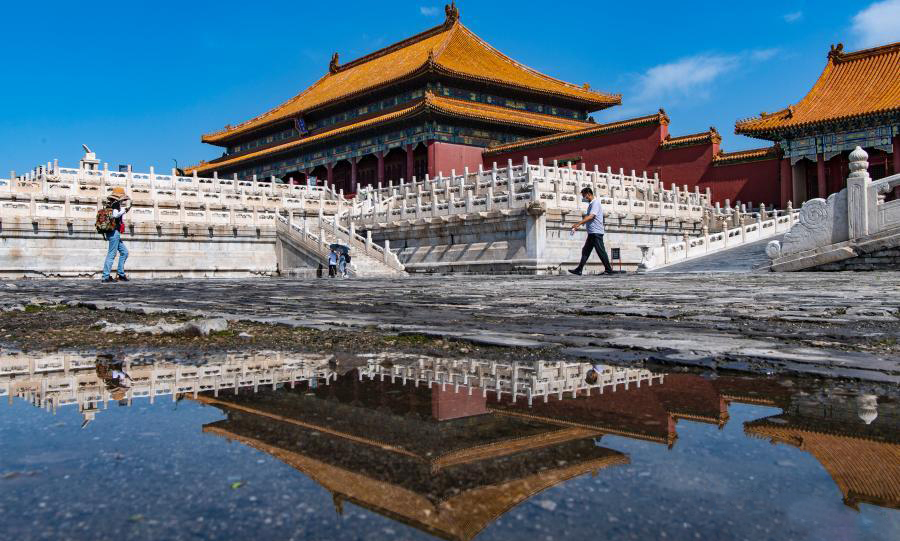Across China: Energy powerhouse speeds up shift to green strategy
YINCHUAN, July 15 (Xinhua) -- On the western edge of Maowusu, one of China's major deserts, stands a factory making a kind of clean energy to replace coal -- hydrogen.
The factory, in northwest China's Ningxia Hui Autonomous Region, is dubbed "super" because it is purely powered by solar energy from a vast photovoltaics (PV) field which sits adjacent. In the near future, its annual capacity is expected to reach 2.45 million tonnes of hydrogen from electrolyzed water.
The Ningdong Energy and Chemical Industry Base, where the factory is located, is among China's top 10 energy and chemical industry bases in terms of production capacity. It used to rely entirely on Ningxia's rich coal resources, producing 4 million tonnes of fuel each year.
As China pushes for green and low-carbon development, the base has been searching for an alternative resource to optimize the energy structure, and hydrogen became the preferred option.
Ouyang Minggao, an academician with the Chinese Academy of Sciences and a professor at Tsinghua University, believes that the development of hydrogen fits into China's broader energy strategy and the industry is expected to enter the peak of its development in the next five to 10 years.
According to Tao Shaohua, an official at the base, by adopting high technology and clean energy, the base cut coal use by 400,000 tonnes last year, thus reducing carbon dioxide emissions by 900,000 tonnes.
As a major power supplier to eastern China, Ningxia has been shifting from a coal-dominated energy structure to a more green, sustainable pattern, betting on its abundant solar and wind resources.
The local government has been investing millions of dollars in PV projects along the Yellow River and in arid land, taking full advantage of vacant space in the Gobi Desert, abandoned fields and coal mine pits.
The astounding PV parks in Ningxia have even become popular tourist destinations over the years.
"We are focusing on green technology innovations, green energy production and green economic development along with the transformation of our energy sector," said Li Yuhua, head of Ningxia's development and reform commission, the regional top economic planner.
The shift in energy structure could also be a useful reference for other countries in their fight against climate change, according to experts at an online seminar on renewable energy in Ningxia earlier this month.
Li Bo, deputy managing director of the International Monetary Fund, said that sharing new energy technologies is key for the success of the United Nation's plans in its fight against climate change.
"With about 85 percent of upcoming low carbon emission technologies ready to enter market within the current decade, we need to quickly popularize these technologies around the world," said Li.
Photos
Related Stories
- German Bundestag approves renewable energy expansion
- China details plan to boost industrial energy efficiency
- Commentary: China never wavers in carbon commitment
- China releases action plan to boost industrial energy efficiency
- Renewable energy development boosts China's pursuit for carbon goals: report
- Multinationals blaze green path toward China's "dual carbon" goals
- China launches national energy-saving week
- China aims to achieve annual clean energy output of 3.3 trln kWh by 2025
- China's energy supply generally stable this year: official
- Scientists engineer new material that can harvest energy 24-hr uninterrupted
Copyright © 2022 People's Daily Online. All Rights Reserved.









